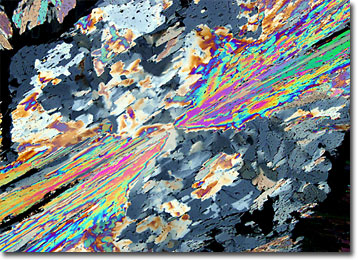Polarized Light Microscopy Digital Image Gallery
Trifluoromethylbenzeneboronic Acid
Accounts of the medicinal use of plants and minerals date back to antiquity, but the pharmaceutical profession is generally believed to have originated in 1617, when the Society of Apothecaries was established in London. Since that time, a tremendous array of pharmaceuticals has been developed through a wide variety of means.

Some of the earliest pharmaceuticals put into use were anesthetics, such as morphine, ether, and chloroform, all of which were developed in the first half of the nineteenth century. Soon after, in 1865, the English surgeon Joseph Lister began utilizing phenol to help prevent infections. The following century, the base of medical and chemical knowledge grew by leaps and bounds, and so, correspondingly, did the number of pharmaceutical treatments available for use. Many diseases and conditions that were once fatal could be treated or avoided altogether in the twentieth century, and the average life expectancy of humans rose dramatically.
Today, the life science and pharmaceutical fields continue to develop at an amazing pace. In order to carry on such an impressive rate of drug discovery and development, a number of chemical compounds have been created to facilitate organic synthesis and chemistry. Among the most important of these compounds are boronic acids, such as benzeneboronic acid, naphthaleneboronic acid, and trifluoromethylbenzeneboronic acid, which act as versatile chemical precursors from which a wide range of chemical substances may be built. Indeed, boronic acids, which are stable in air, easy to handle, and form nontoxic byproducts, are most heavily utilized in Suzuki coupling reactions that quickly and effectively form carbon-carbon bonds, an essential step in innumerable chemical reactions.
